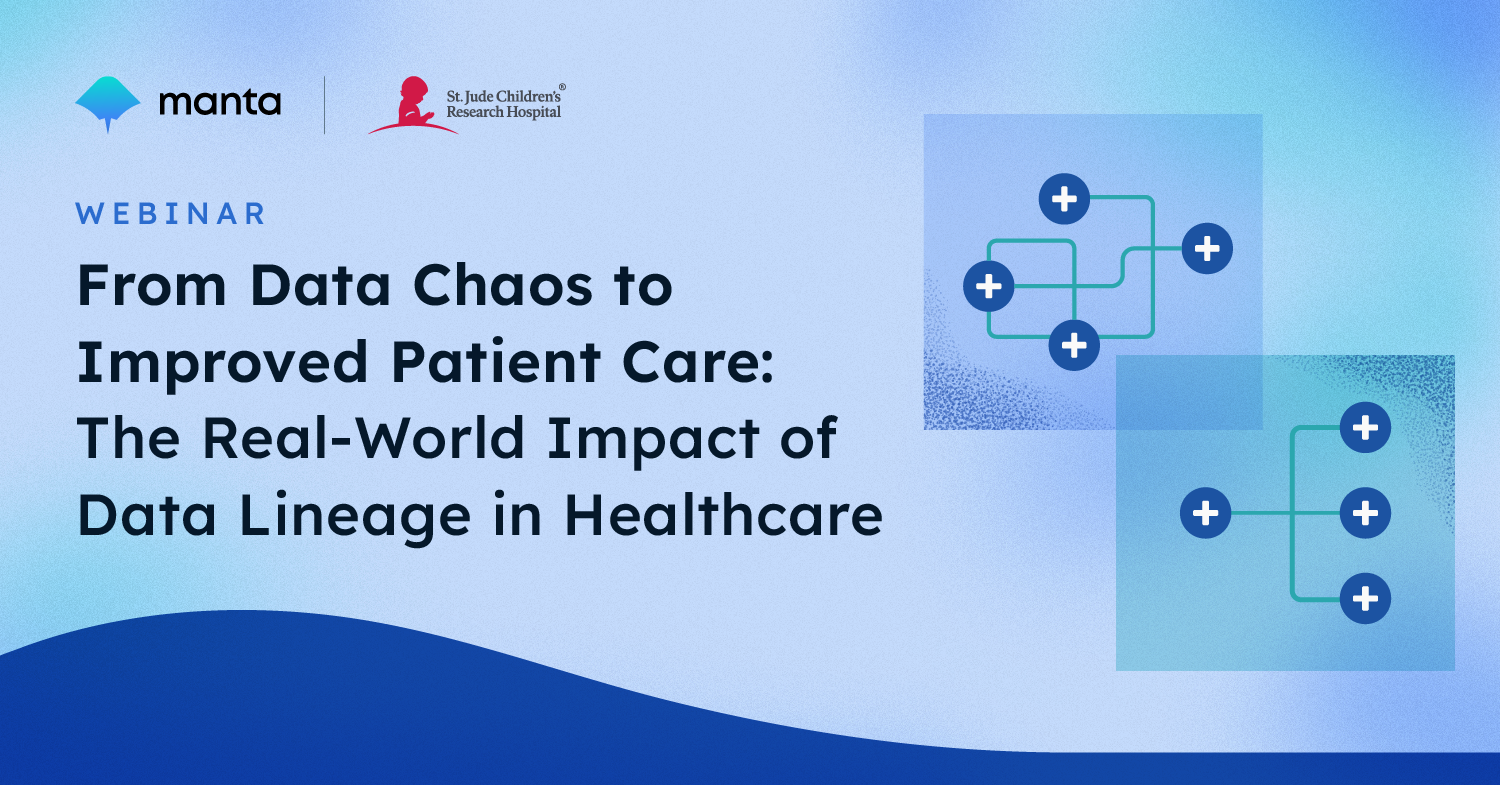
In today's rapidly evolving healthcare landscape, the importance of effective data management and governance cannot be overstated. Catherine Joyce, the Director of Data and Analytic Program Governance at St. Jude Children's Research Hospital, shared her experiences with Manta in a recent webinar all about navigating the complex world of healthcare data and the pivotal role data lineage plays in their journey.
Challenges in Data Transition
St. Jude had been going through significant transitions, implementing a new Electronic Medical Records (EMR) system and switching to a new HR, finance, and supply chain vendor. These transitions posed several challenges, including understanding what data would migrate to the new systems and what would be excluded. Additionally, the analytics team faced the daunting task of ensuring data accessibility and supporting institutional leaders during this critical period.
One of the central challenges was dealing with niche healthcare systems, with a primary focus on on-premises SQL servers. Untangling these systems and establishing clear rules for future data management became a priority for the team.
Resource Drain and Knowledge Loss
Without an end-to-end lineage capability, the remediation efforts consumed significant resources, including time, talent, and financial investments. The reliance on contingent workers created concerns about knowledge loss within the core team and led to a perception among leadership that the analytics team was a financial burden rather than a source of cost savings and data-informed decision-making.
Manual Mapping and Data Quality Issues
One of the major pain points was the need to manually map data flows from source systems to data warehouses and BI solutions like Power BI and Tableau. This manual process was not only time-consuming but also expensive. The lack of visibility into data lineage undermined the credibility of the analytics community within the institution.
The Importance of Lineage for St. Jude
St. Jude's goal for implementing lineage capability was clear: to increase trust through data observability. This would first aid in remediation efforts, eliminating the need for manual mapping and impact analysis. When successful, the team expected to see changes in downstream systems or reports as data moved or changed, ultimately saving time and resources.
The team aimed to establish itself as a credible source of data by providing reliable and efficient data delivery, enabling data democratization and self-service analytics across the institution.
Lineage as a Cornerstone of Governance
Lineage was identified as the cornerstone of St. Jude's data and analytics governance program. The ability to visualize data's end-to-end journey, from storage to source and destination, was deemed powerful and practical. It was critical for establishing governance rules for an institution like St. Jude, where innovation and empowerment were essential in advancing treatment research and cures for children with catastrophic diseases.
Data Privacy and Compliance
Joyce stressed the importance of demonstrating data ownership and access to the hospital's C-suite executives. Compliance with data privacy regulations and the protection of personally identifiable information were crucial. Discovering data quality issues early and monitoring data more intentionally were key objectives. This would ensure the hospital's architecture remained observable and adaptable to emerging analytics trends.
The Impact of Data Lineage on St. Jude’s Healthcare
Data lineage didn’t just improve the internal workings of St. Jude. The following is just one powerful example of how analytics improved patient care at St. Jude:
The ability to track and optimize the patient experience, from lab work to chemotherapy administration, not only ensured compliance but also placed the patient at the center of their care. Data and analytics empowered the entire hospital community to work more effectively toward their mission of advancing cures and prevention for pediatric catastrophic diseases.
This means that data lineage translates to real, tangible, positive patient outcomes. In healthcare,
Next Steps for St. Jude
St. Jude has identified partners across the institution, emphasizing that this wasn't solely an IT or information services effort. The collaborative approach aimed to engage various stakeholders and ensure the successful implementation. The hospital then planned to adopt a phased approach to expand their use of Manta, starting with high-priority on-premises SQL servers.
St. Jude Children's Research Hospital's commitment to responsible data democratization and self-service analytics is evident. Their collaboration with Manta to implement end-to-end lineage capabilities is poised to make a substantial impact on healthcare innovation, compliance, and patient care. As Joyce and her team continue their journey, they remain dedicated to advancing cures and prevention for pediatric catastrophic diseases, living up to the hospital's noble mission.
P.S. This post was written by a human!

